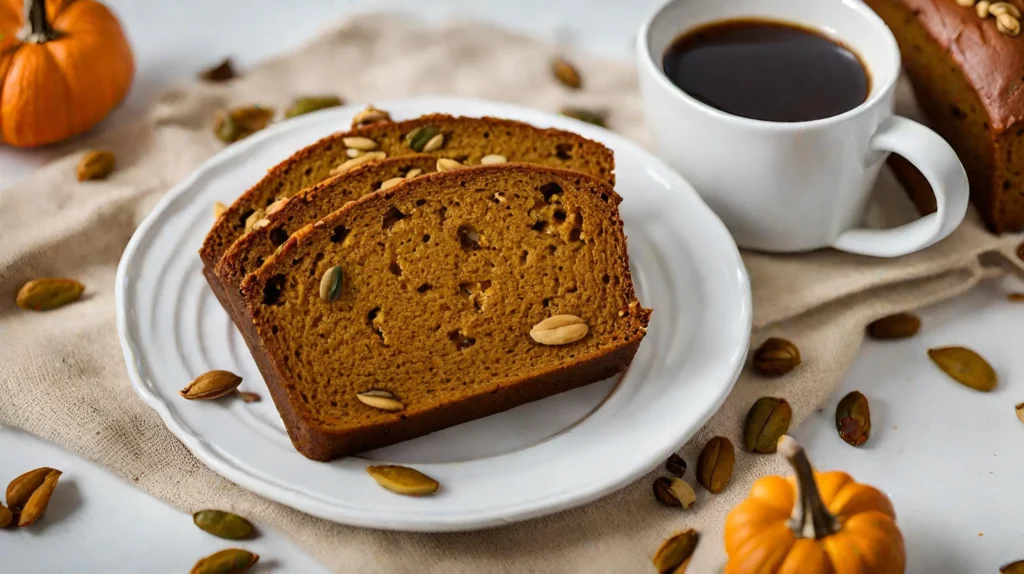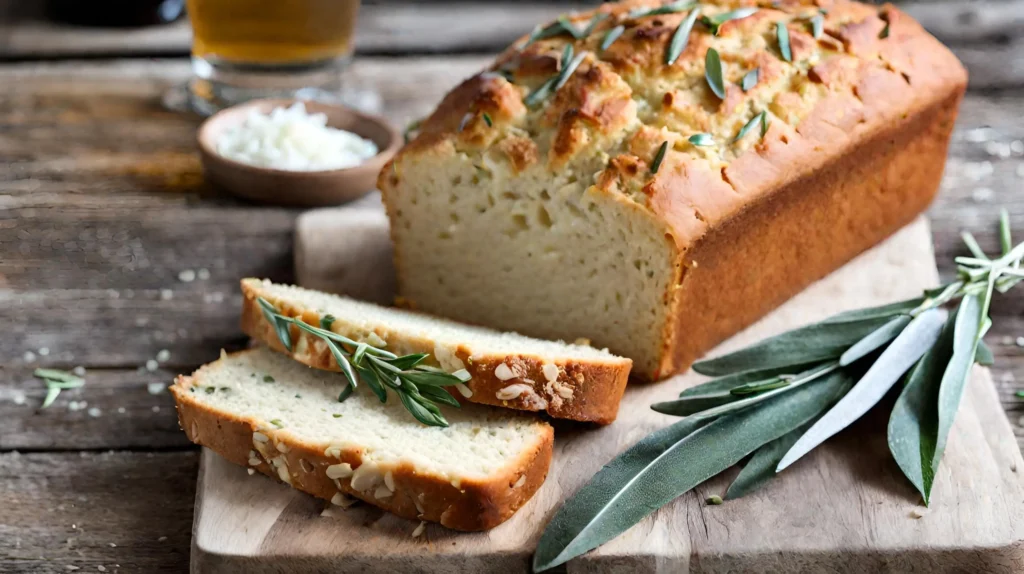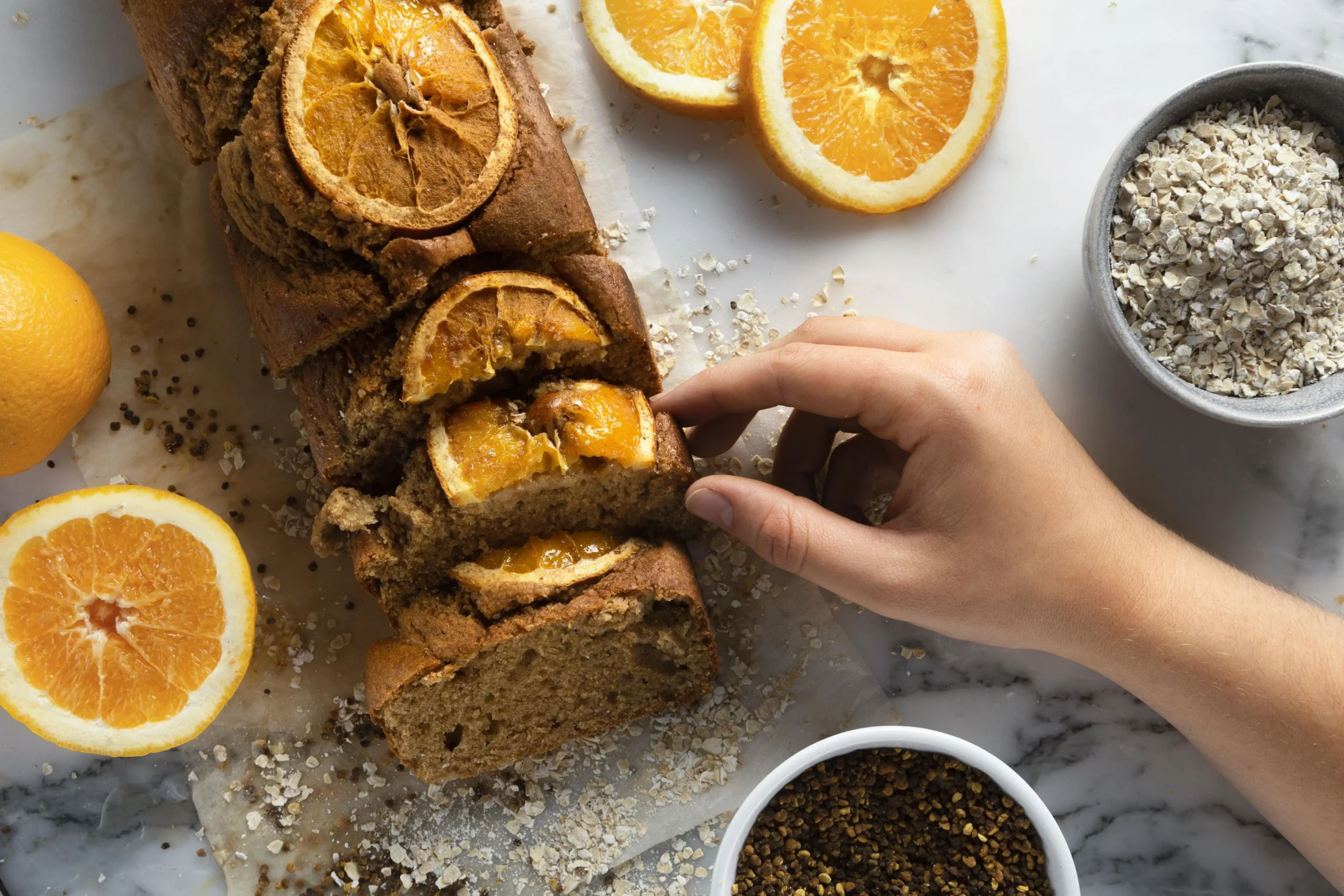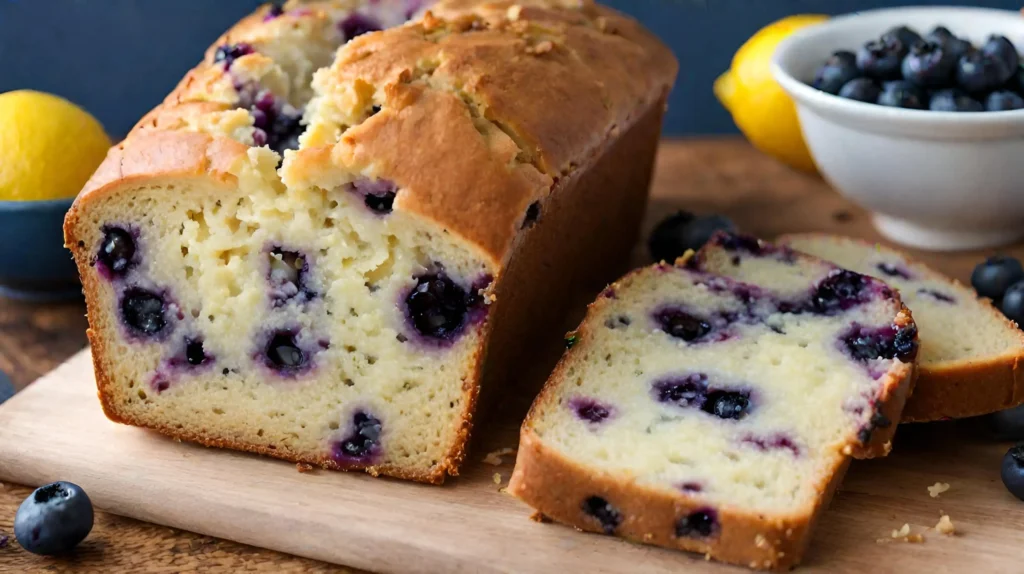Quick Bread Recipes have revolutionized the baking world with their simplicity and versatility. Unlike traditional bread, quick breads don’t require yeast and long fermentation periods, making them a popular choice for both novice and experienced bakers. This guide delves into the world of quick breads, offering insights into their ingredients, preparation methods, and innovative recipe ideas.
Key Ingredients in Quick Bread
- Flour: The foundation of any quick bread, flour provides structure.
- Leavening Agents: Baking powder and baking soda are the most common. They release gases, causing the bread to rise.
- Eggs: They add moisture, richness, and help in binding the ingredients.
- Fats: Such as butter or oil, contribute to the bread’s moistness and flavor.
- Liquids: Milk, water, or juice, are essential for combining the dry ingredients.
The Science Behind Quick Bread
The magic of quick bread lies in its leavening agents. Baking soda (sodium bicarbonate) reacts with acidic ingredients like yogurt or lemon juice, releasing carbon dioxide. Baking powder, a combination of baking soda and an acid, only needs moisture to activate. This chemical reaction creates air bubbles, making the bread rise and giving it a light and airy texture.
Tips for Perfect Quick Bread Every Time
- Mixing Technique: Avoid overmixing the batter to prevent tough bread.
- Oven Temperature: Preheat your oven for even baking.
- Proper Measurement: Use the spoon-and-level method for measuring flour.
- Ingredient Temperatures: Room temperature ingredients blend more easily.
Classic Quick Bread Recipes
Lemon Blueberry Bread
This delightful quick bread combines the tanginess of lemon with the sweetness of blueberries, creating a perfect balance of flavors. Key ingredients include fresh blueberries, lemon zest, and juice, which infuse the bread with a refreshing citrus aroma. Ideal for a summer brunch or a comforting snack, this recipe is a testament to the versatility of quick breads.
Copycat Starbucks Pumpkin Bread
Recreate the seasonal favorite at home with this Copycat Starbucks Pumpkin Bread recipe. Featuring the warm spices of cinnamon, nutmeg, and cloves, along with the richness of pumpkin puree, this bread is a fall staple. Its moist texture and spicy aroma make it a hit among pumpkin lovers.
Zucchini Pineapple Bread
Zucchini Pineapple Bread is a unique twist on traditional zucchini bread. The addition of crushed pineapple not only adds a tropical flair but also ensures the bread stays incredibly moist. Grated zucchini, a sneaky way to incorporate vegetables, blends seamlessly into the bread, making it a healthier option.
Parmesan-Sage Beer Bread
For those who love savory flavors, Parmesan-Sage Beer Bread is a must-try. This recipe uses beer as a leavening agent, which reacts with the flour and baking powder to create a light, airy texture. The savory notes of Parmesan cheese and sage make this bread a perfect accompaniment to soups and stews.
Classic Irish Soda Bread
A staple in Irish cuisine, Classic Irish Soda Bread is known for its simplicity and rustic charm. Made with just a few ingredients – flour, baking soda, buttermilk, and salt – this bread is characterized by its dense texture and slightly sour taste. It’s often enjoyed with butter, cheese, or smoked salmon.
Creative Twists on Traditional Recipes
Spiced Apple Muffin Bread
Transforming the classic apple muffin into a quick bread, this Spiced Apple Muffin Bread is a delightful treat. Infused with cinnamon, nutmeg, and chunks of fresh apples, it’s a perfect blend of moist texture and autumnal flavors. Ideal for a cozy breakfast or a comforting snack, this bread brings a creative twist to the traditional apple muffins.
Buttery Cornbread
Taking a step away from the sweet spectrum, this Buttery Cornbread recipe offers a savory delight. Rich in buttery flavor and with a tender crumb, it pairs wonderfully with chili or as a side for BBQs. The addition of corn kernels can add a pleasant texture, making it a satisfying variation of the classic cornbread.
Chocolate Zucchini Bread
Chocolate Zucchini Bread is a fantastic way to sneak vegetables into a delicious treat. The grated zucchini not only adds moisture but also ensures the bread is incredibly soft. Combined with rich cocoa and chocolate chips, this bread is a perfect balance of healthy and indulgent, suitable for both breakfast and dessert.
Cranberry Sweet Potato Bread
Merging the sweetness of sweet potatoes with the tartness of cranberries, this quick bread is a celebration of flavors. The sweet potatoes provide a natural sweetness and a moist texture, while the cranberries add a burst of flavor. This bread is not only delicious but also visually appealing, making it a great option for festive occasions.
Lemon-Thyme Tea Bread
For those who prefer subtle and refined flavors, the Lemon-Thyme Tea Bread is an exquisite choice. The combination of fresh thyme and lemon zest offers a refreshing and aromatic experience. This bread pairs beautifully with tea, making it an elegant addition to afternoon tea sessions or brunch gatherings.
Quick Bread for Special Diets
Gluten-Free and Dairy-Free Options
For those with dietary restrictions, quick breads can still be a delightful treat. Gluten-free and dairy-free versions are not only possible but can be equally delicious.
- Gluten-Free Quick Bread: By using gluten-free flour blends, which often combine rice flour, potato starch, and xanthan gum, you can achieve a texture similar to traditional bread. Adding almond flour can also enhance the flavor and provide a moist crumb.
- Dairy-Free Quick Bread: Substitute dairy ingredients with almond milk, coconut oil, or vegan butter. These alternatives not only cater to dairy-free needs but also add unique flavors to the bread.
Healthy Alternatives
Quick breads can be made healthier without sacrificing taste. Incorporating whole grains and natural sweeteners can boost the nutritional value.
- Whole Grains: Use whole wheat flour, oat flour, or spelt flour for added fiber and nutrients. These grains impart a nutty flavor and denser texture, making the bread more filling and nutritious.
- Natural Sweeteners: Replace refined sugars with honey, maple syrup, or mashed bananas. These natural sweeteners not only provide a subtle sweetness but also contribute additional health benefits.

Serving and Storing Quick Bread
Best Ways to Serve Quick Bread
Quick breads are incredibly versatile, making them perfect for various occasions and pairings. Here are some delightful ways to serve them:
- Breakfast and Brunch: Serve slices of sweet quick bread with butter, jam, or cream cheese. They pair wonderfully with coffee or tea.
- Dessert: Enhance sweet bread with a scoop of ice cream or a drizzle of caramel sauce for a decadent dessert.
- Savory Accompaniments: Serve savory quick breads alongside soups, stews, or salads. They are excellent for dipping or as a hearty side dish.
Storing and Freezing Tips
Proper storage is key to maintaining the freshness and flavor of quick breads. Here’s how to keep them at their best:
- Room Temperature Storage: Keep bread in an airtight container for up to 3 days. Wrap it in plastic wrap or aluminum foil to retain moisture.
- Refrigeration: For longer storage, refrigerate the bread wrapped tightly for up to a week.
- Freezing: Quick breads freeze exceptionally well. Wrap them in plastic and then aluminum foil, and they can last up to 3 months in the freezer. Thaw at room temperature when ready to eat.
Innovative Uses and Pairings for Quick Bread Recipes
Quick breads are not just standalone treats; they can be transformed into various delightful dishes and paired with numerous accompaniments. This versatility makes them a valuable addition to any meal, from breakfast to dinner. Here are some innovative ways to use and pair quick breads:
Transforming Leftover Quick Bread
- Bread Pudding: Use leftover or slightly stale quick bread to make a luxurious bread pudding. Combine with eggs, milk, sugar, and your favorite spices for a comforting dessert.
- French Toast: Elevate your breakfast by using slices of sweet quick bread for French toast. The inherent flavors of the bread will add an extra dimension to this classic dish.
- Croutons: Dice savory quick bread into small cubes, toss them with olive oil and herbs, and bake until crispy for homemade croutons, perfect for soups and salads.
Pairing Quick Breads with Meals
- With Coffee or Tea: Sweet quick breads like banana or blueberry bread are perfect with your morning coffee or afternoon tea. They offer a sweet, satisfying complement to your beverage.
- As a Side Dish: Savory quick breads like cheese or herb bread can be served alongside main courses. They pair exceptionally well with soups, stews, and salads.
- Dessert Transformations: Turn a simple quick bread into an elegant dessert by adding toppings like whipped cream, fresh fruits, or a drizzle of chocolate sauce.
Creative Sandwich Ideas
- Sweet Sandwiches: Use slices of sweet quick bread to make unique sandwiches. Fillings like cream cheese, nut butter, and sliced fruits can turn a simple snack into a gourmet treat.
- Savory Sandwiches: Savory quick breads can be used as the base for creative sandwiches. Think outside the box with fillings like roasted vegetables, gourmet cheeses, and specialty meats.
Hosting with Quick Breads
- Brunch Feature: Quick breads can be a star at brunch gatherings. Serve an assortment of sweet and savory breads for guests to enjoy.
- Gift-Giving: Homemade quick breads make thoughtful and personal gifts. Wrap them beautifully and include the recipe for a special touch.

Seasonal and Festive Quick Bread Recipes Variations
Quick breads can be adapted to fit any season or festive occasion, making them a versatile choice for year-round baking. By incorporating seasonal ingredients and festive flavors, you can create quick breads that perfectly complement the time of year or special event. Here are some ideas for seasonal and festive quick bread variations:
Spring Flavors
- Lemon-Poppy Seed Bread: Embrace the freshness of spring with a zesty lemon-poppy seed bread, perfect for afternoon tea.
- Strawberry-Walnut Bread: Incorporate fresh strawberries for a sweet and nutty bread, ideal for a spring brunch.
Summer Delights
- Peach and Almond Bread: Use ripe peaches for a moist, fragrant bread, enhanced with the crunch of almonds.
- Berry-Lemon Bread: Combine summer berries with lemon for a tangy and sweet treat, great for picnics.
Autumn Harvest
- Pumpkin Spice Bread: A fall classic, this bread is rich with flavors of pumpkin and warming spices like cinnamon and nutmeg.
- Apple-Cinnamon Bread: Incorporate autumn’s favorite fruit for a comforting and hearty bread, perfect for chilly evenings.
Winter Warmers
- Cranberry-Orange Bread: The tartness of cranberries pairs well with the sweetness of orange, making a festive bread for the holiday season.
- Gingerbread Loaf: Embrace the holiday spirit with a gingerbread loaf, spiced with ginger, cloves, and cinnamon.
Festive Variations
- Chocolate Peppermint Bread: For a holiday treat, add peppermint extract and chocolate chips to your bread.
- Eggnog Bread: Use eggnog in place of milk for a rich, festive flavor, ideal for Christmas morning.
Special Occasions
- Red Velvet Bread: A twist on the classic cake, this bread can be a unique addition to Valentine’s Day or anniversaries.
- Green Tea and Honey Bread: For a sophisticated flavor profile, perfect for Mother’s Day or spring gatherings.
FAQs: Quick Bread Recipe Insights
What Does Adding Milk Instead of Water Do to Bread?
When you substitute milk for water in a quick bread recipe, you’re essentially enhancing the bread’s overall quality. Milk contributes to a richer flavor and a more tender crumb compared to water. This is because milk contains fats and sugars, which improve the texture and color of the bread. The fats in the milk enrich the bread, making it softer and giving it a more appealing golden crust. This simple substitution can elevate a basic quick bread recipe to something more flavorful and satisfying.
Is It Cheaper to Make My Own Bread?
The cost-effectiveness of making your own quick bread at home versus buying it from a store can vary, but generally, homemade bread can be more economical. When you bake your own bread, you have the advantage of bulk purchasing ingredients, which can reduce the cost per loaf. Additionally, homemade bread doesn’t contain the preservatives found in many store-bought bread, making it a healthier option. The real value, however, comes from the ability to customize your bread to your taste preferences and dietary needs, something that’s priceless.
What Are the Four Main Ingredients in Quick Breads?
Quick breads typically consist of four main ingredients: flour, leavening agents, eggs, and fat. Flour provides the structure, while leavening agents like baking powder or soda are responsible for making the bread rise. Eggs are crucial for binding the ingredients together and adding moisture, and fats, such as butter or oil, contribute to the bread’s flavor and texture. These ingredients form the foundation of various quick bread recipes, allowing for endless variations and flavors.
What Are the 3 Types of Quick Breads?
There are three primary types of quick breads, each defined by the consistency of the batter and its ingredients. Pour batters have a liquid-to-dry ratio of about 1:1 and are used for making pancakes and waffles. Drop batters, with a liquid-to-dry ratio of about 1:2, are thicker and ideal for muffins and some loaf bread. Doughs, which have a higher proportion of flour, are used for biscuits and scones. Understanding these types can help in achieving the desired texture and outcome for various quick bread recipes.
Conclusion: Embracing the Art of Quick Bread Baking
In this comprehensive guide to Quick Bread Recipes, we’ve journeyed through the simplicity and versatility that make these breads a beloved staple in the baking world. From understanding the key ingredients and the science behind their rise to exploring a plethora of recipes and creative adaptations, quick breads emerge as a canvas for culinary creativity and expression.
The beauty of quick breads lies in their ease and adaptability. Whether you’re a beginner baker or a seasoned culinary artist, quick breads offer a delightful and satisfying experience. They accommodate a range of dietary preferences, from gluten-free to dairy-free, ensuring that everyone can enjoy the warmth of a freshly baked loaf.
Our exploration of classic recipes like Lemon Blueberry Bread and innovative twists like Chocolate Zucchini Bread showcases the endless possibilities that quick breads offer. Seasonal variations like Pumpkin Spice Bread for autumn and Eggnog Bread for the festive season highlight how these breads can celebrate the flavors and spirit of any occasion.
Moreover, quick breads are not just about the end product but the joy found in the baking process. They are a testament to the fact that great results don’t always require complex techniques or lengthy processes. The simplicity of mixing ingredients and the anticipation as they transform in the oven bring a unique sense of accomplishment and joy.
As we conclude this guide, remember that each loaf you bake is not just about following a recipe but about infusing your personal touch and creativity. Quick breads are a reminder of the joy of baking, the warmth of sharing, and the beauty of simplicity. So, preheat your oven, gather your ingredients, and let the delightful adventure of quick bread baking begin!


